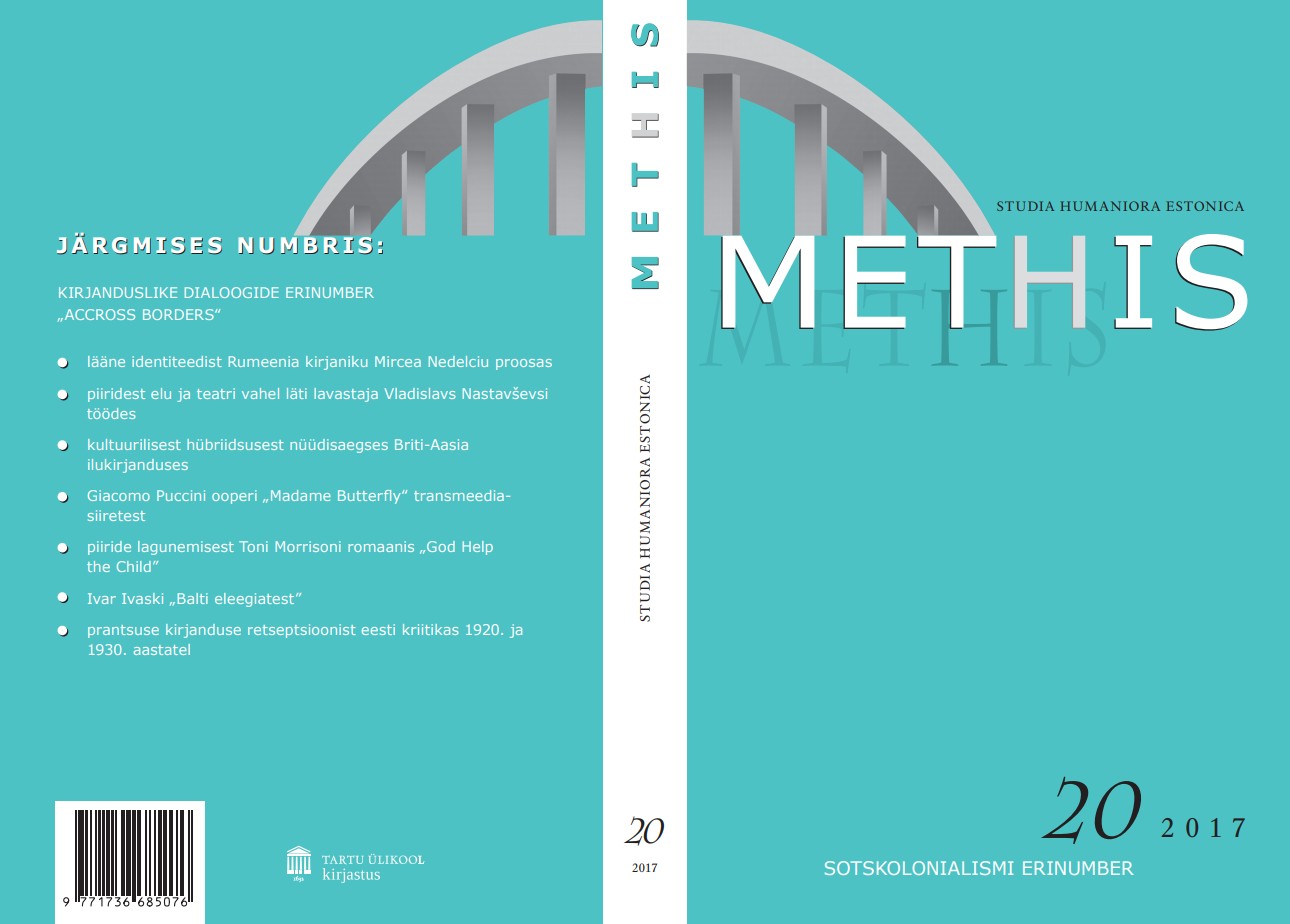Kammerlikust karmiks. Karm stiil nõukogude eesti rahvusliku kunsti delegaadina / Soviet Severe style as a representative of national particularities in Estonian art
DOI:
https://doi.org/10.7592/methis.v16i20.13893Keywords:
nõukogude aeg, kultuuripoliitika, rahvuslik kunst, Baltimaad, Soviet era, cultural policy, national art, Baltic StatesAbstract
Tänapäeva Eesti kunstiajalookirjutuses kirjeldatakse rahvuslikku diskursust eelkõige nõukogude režiimile oponeeriva kaitsemehhanismina. Samas on see olnud üks olulisemaid märksõnu ka nõukogude kultuuripoliitikas. Artiklis käsitletaksegi rahvuslikkuse diskursuse muutumist sulaperioodi nõukogude kultuuripoliitikas ning vaadeldakse Hruštšovi ajajärgu ametlikuks kunstiks tituleeritud karmi stiili rolli eesti kunsti rahvuslike tunnuste määratlemisel 1960. aastate esimesel poolel Balti riikide ühiste nn esindusnäituste kontekstis.
The article addresses the developments of national discourse in visual arts during the Thaw, exploring the role of Estonian version of the Severe style – an all-union phenomenon retrospectively labeled the “official” art of the Khrushchev period – in defining the national characteristics of Estonian art in the 1960s.
In Estonian post-Socialist art history writings on the Soviet era, the concept national has mostly been introduced as a defense mechanism against the regime, identified in art of the Thaw period first and foremost in reviving the impressionist qualities prominent in local prewar art. Nevertheless, the national question has also been one of the central concerns in Soviet cultural policy, undergoing quite remarkable changes over the time. Being suppressed during the Stalinist years, the clarification and cultivation of national particularities became one of the most important methods of de-Stalinization in visual arts after the 20th Congress of the Communist Party of the Soviet Union in 1956. The critical revisions of the stiff division of cultural creations into “socialist content” and “national form” followed, seeing the national qualities manifesting itself also in substance of art works. This brought along the gradual reassessing of the great part of pre-Soviet artistic heritage. The main aim of the “nativization” or “(re-)nationalization”, however, was to reawake contemporary art, having been restrained by rigid restrictions of Stalinist socialist realism dogmas. Additionally, due to Khrushchev’s policy of opening up to the world, since the end of 1950s the rivalry with the West provided reason to modernize the visual language of Soviet art, and to mobilize on an anti-abstractionism front to establish a common (international) socialist contemporary artistic language. Consequently, the discussions about “contemporary style”, envisaging the qualities like publicist pathos, synthesis, expressiveness, laconism and monumentalism, overflew the cultural media. Around 1960 the new program of Soviet art evolution started to take form, being described as a “dialectic” process of simultaneous blossoming of national cultures and internationalization (drawing together the cultures of Soviet nations).
In the visual arts, the characteristics of “contemporary style” related most closely with the attributes of Severe style, especially in the so called thematical pictures (figurative compositions on the “important” subject). Most prominent schools of the style emerged in the end of 1950s-early 1960s in Moscow and Riga, but similar features were quite strongly visible in Estonian art of the era as well. Although since the 1990s the Estonian art history studies have seen the phenomenon as being more foreign than intrinsic to Estonian art, I argue that the local version of “international” Severe style had an impact on the perception of Estonianness in the 1960s. As back then the topic of national particularities was addressed most profoundly in relation to representative exhibitions, especially those providing possibilities of comparing the different national schools, in the article the reception of joint exhibitions of Baltic art (the 1959 exhibition and conference of Baltic Thematic Painting in Tallinn and the 1960 and 1966 anniversary art exhibitions of 20 and 25 years of Soviet Lithuania, Latvia and Estonia in Moscow) are analyzed.
It appears that in the end of 1950s and early 1960s it was Latvian large scale Severe styled thematic paintings that overshadowed the Lithuanian and Estonian art, lacking proper thematic compositions. Estonian art was criticized for being too modest and reserved, even cold. Its intimate format and restrained mood were not considered that much national particularities as shortcomings. However, the mid-1960s brought changes. Inspired by Latvian success, Severe style established itself more strongly in Estonian art as well, providing quite a few thematic compositions (still rather small in size). What’s more, the discussions on “contemporary style” found a new format to elaborate – monumental art –, allowing to reinstate the specific qualities of panel painting. Respectively the reception of the 1966 joint exhibition of Baltic art in Moscow was very favourable to Estonian school: its intimate format was now praised for being honest, its ascetism no longer associated with poorness. The school was characterized by a severity, its unique, emotional intellectuality. Accordingly one could claim that it was in large part thanks to the “international” Severe style that the most important features of Estonian art – restraint and reticence – were officially approved and coldness became valued and re-termed severity. The case of Severe style quite well demonstrates how the nationalization of art worked concurrently as a tool of sovetization. As the authoritative assessments had a strong impact on the self-descriptions of the Estonian school, it is rather impossible in retrospect to distinguish the defensive nationality from the soviet national discourse.


